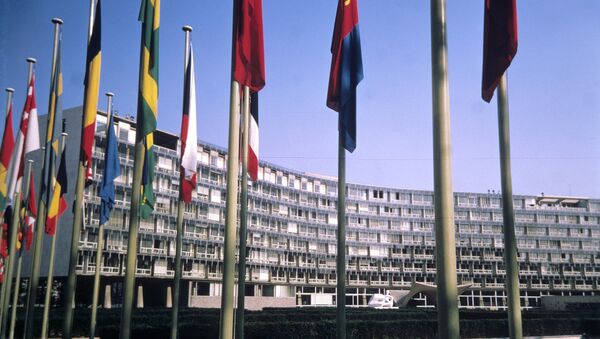The problem with culture, however, is that different places have different sets of values, different priorities, – and when supra-national organization tries to force decisions, they’re not supported by everyone. The article in Diplomatic History Oxford journal, April 2006, authored by S.E. Graham, provides a vivid example of the clash between ideals and reality:
The most conspicuous source of the politicization of culture within Unesco in [1970s] was the United States, which had the financial capacity and institutional dominance to shape the organization’s agenda and principles. The United States also had an obvious interest in shaping global cultural relations as the Cold War conflict emerged, and U.S. diplomatic strategy in Unesco reflects key shifts in how its cultural interests were framed according to its broader ideological objectives.
The conflict began when UNESCO supported the New World Information and Communication Order in the 1970s and 1980s. At the time Nobel Peace Prize laureate Sean MacBride proposed to make global media representation more equitable: the idea was to provide a more egalitarian access to information. What could go wrong? Well, this approach was perceived by some members as creation of a platform for communists to attack the West, although just a few years prior it was the Eastern bloc that threw the same accusation at the West. Thus in 1984, the United States withheld its contributions to UNESCO and quit the organization. United Kingdom soon followed. The UK only rejoined in 1997, and the US in 2003, long after the end of the Cold War.
One of the latest incidents which question UNESCO’s loyalty to global ideas happened in February of 2012. UNESCO held a conference entitled, "The Media World after WikiLeaks and News of the World.” Interestingly, although all six panels were focused on WikiLeaks, no representatives of WikiLeaks were invited to speak; many invited speakers were known critics of Julian Assange. On the eve of the conference, WikiLeaks issued a statement:
UNESCO has made itself an international human rights joke. To use "freedom of expression" to censor WikiLeaks from a conference about WikiLeaks is an Orwellian absurdity beyond words. This is an intolerable abuse of UNESCO’s Constitution. It’s time to occupy UNESCO.
The statement then did what WikiLeaks does best – showed potential connections between interested parties, such as, in this case, MasterCard and US State Department, sponsoring the 2011 "UNESCO World Press Freedom Day" – an interesting coincidence, to say the least.
Even the organization’s World Heritage Program has received its share of criticism. The idea is that natural and man-made wonders are offered the ultimate protection, preventing developers, looters, polluters and other destructive agents from destroying the sites or altering them beyond recognition. At times, a reverse effect is achieved – the sites find their way to “things to see before you die” lists, becoming tourist attractions.
The Independent newspaper has an article providing one such example. The Iwami Ginzan silver on Honshu Island was added to the list recently. Toshiro Nakamura, a local businessman, decided to make it a tourist hotspot – and, long story short, he achieved his goal. He went to the local government with the idea, and they fully supported it – who could say no to a massive tourism economy boost? The local government, in turn, had ties with Japanese diplomats, who represented Japan in UNESCO. As World Heritage sites are localized – i.e. proposed by governments on their territory, Japan eventually managed to get the organization to name Iwami a new Unesco's World Heritage Site. The result? The year following the mine’s rebranding, instead of the usual 15,000, almost a million tourists showed up to see the new Heritage Site.

